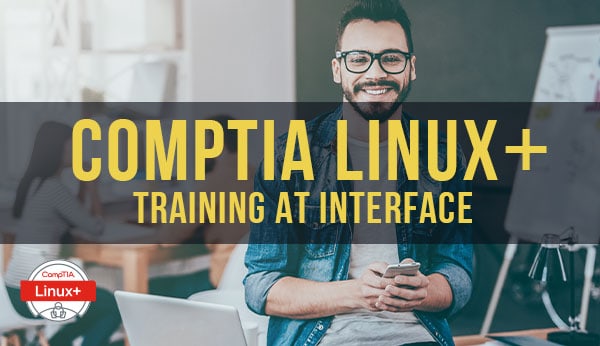
Lesson 1: Introducing Linux
- Topic 1A: Identify Linux Characteristics
- Topic 1B: Understand Bash Interaction with Linux
- Topic 1C: Use Help in Linux
- Topic 1D: Identify the Linux Troubleshooting Methodology
Lesson 2: Administering Users and Groups
- Topic 2A: Manage User Accounts
- Topic 2B: Manage Group Accounts
- Topic 2C: Configure Privilege Escalation
- Topic 2D: Troubleshoot User and Group Issues
Lesson 3: Configuring Permissions
- Topic 3A: Configure Standard Linux Permissions
- Topic 3B: Configure Special Linux Permissions
- Topic 3C: Configure Access Control Lists
Lesson 4: Implementing File Management
- Topic 4A: Understand the Linux File System
- Topic 4B: Use File Management Commands
- Topic 4C: Find File Locations
Lesson 5: Authoring Text Files
- Topic 5A: Edit Text Files
- Topic 5B: Manage Text Files
Lesson 6: Managing Software
- Topic 6A: Understand Software Management
- Topic 6B: Manage RPM Software Packages and Repositories
- Topic 6C: Manage Debian-based Software Packages and Repositories
- Topic 6D: Compile from Source Code
- Topic 6E: Acquire Software
- Topic 6F: Run Software in a Sandbox
Lesson 7: Administering Storage
- Topic 7A: Understand Storage
- Topic 7B: Deploy Storage
- Topic 7C: Manage Other Storage Options
- Topic 7D: Troubleshoot Storage
Lesson 8: Managing Devices, Processes, Memory, and the Kernel
- Topic 8A: Gather Hardware Information
- Topic 8B: Manage Processes
- Topic 8C: Manage Memory
- Topic 8D: Manage the Linux Kernel
Lesson 9: Managing Services
- Topic 9A: Manage System Services
- Topic 9B: Configure Common System Services
- Topic 9C: Configure Localization Settings
Lesson 10: Configuring Network Settings
- Topic 10A: Understand Network Fundamentals
- Topic 10B: Manage Network Settings
- Topic 10C: Configure Remote Administrative Access
- Topic 10D: Troubleshoot the Network
Lesson 11: Configuring Network Security
- Topic 11A: Configure the Firewall
- Topic 11B: Monitor Network Traffic
Lesson 12: Managing Linux Security
- Topic 12A: Harden a Linux System
- Topic 12B: Manage Certificates
- Topic 12C: Understand Authentication
- Topic 12D: Configure SELinux or AppArmor
Lesson 13: Implementing Simple Scripts
- Topic 13A: Understand Bash Scripting Basics
- Topic 13B: Use Shell Script Elements
- Topic 13C: Implement Scripts with Logical Controls
Lesson 14: Using Infrastructure as Code
- Topic 14A: Understand Infrastructure as Code
- Topic 14B: Implement Orchestration
- Topic 14C: Manage Version Control with Git
Lesson 15: Managing Containers in Linux
- Topic 15A: Understand Containers
- Topic 15B: Deploy Containers
- Topic 15C: Understand Virtualization Concepts
Lesson 16: Installing Linux
- Topic 16A: The Linux Boot Process
- Topic 16B: Modify Boot Settings
- Topic 16C: Deploy Linux
Appendix A: Mapping Course Content to CompTIA Linux+ (Exam XK0-005)
Appendix B: Linux Command Reference Guide
The Official CompTIA Linux+ (Exam XK0-005) is the primary course you will need to take if your job responsibilities include Linux system administration, installation, and security within your organization. You can take this course to prepare for the CompTIA Linux+ (Exam XK0-005) certification examination.
To ensure your success in this course, you should have at least 12 months of hands-on experience working with Linux servers. CompTIA A+, Network+, and Server+ certifications, or the equivalent knowledge, are strongly recommended.
This course can benefit you in two ways. If you intend to pass the CompTIA Linux+ (Exam XK0-005) certification examination, this course can be a significant part of your preparation. But certification is not the only key to professional success in the field of systems administration. Today’s job market demands individuals with demonstrable skills, and the information and activities in this course can help you build your sysadmin skill set so that you can confidently perform your duties in any intermediate-level Linux systems administration role.
On course completion, you will be able to:
- Configure, manage, and troubleshoot Linux systems.
- Operate Linux in both on-premises and cloud-based server environments.
- Implement security best practices.
- Use scripting, containerization, and automation to optimize a Linux system.
